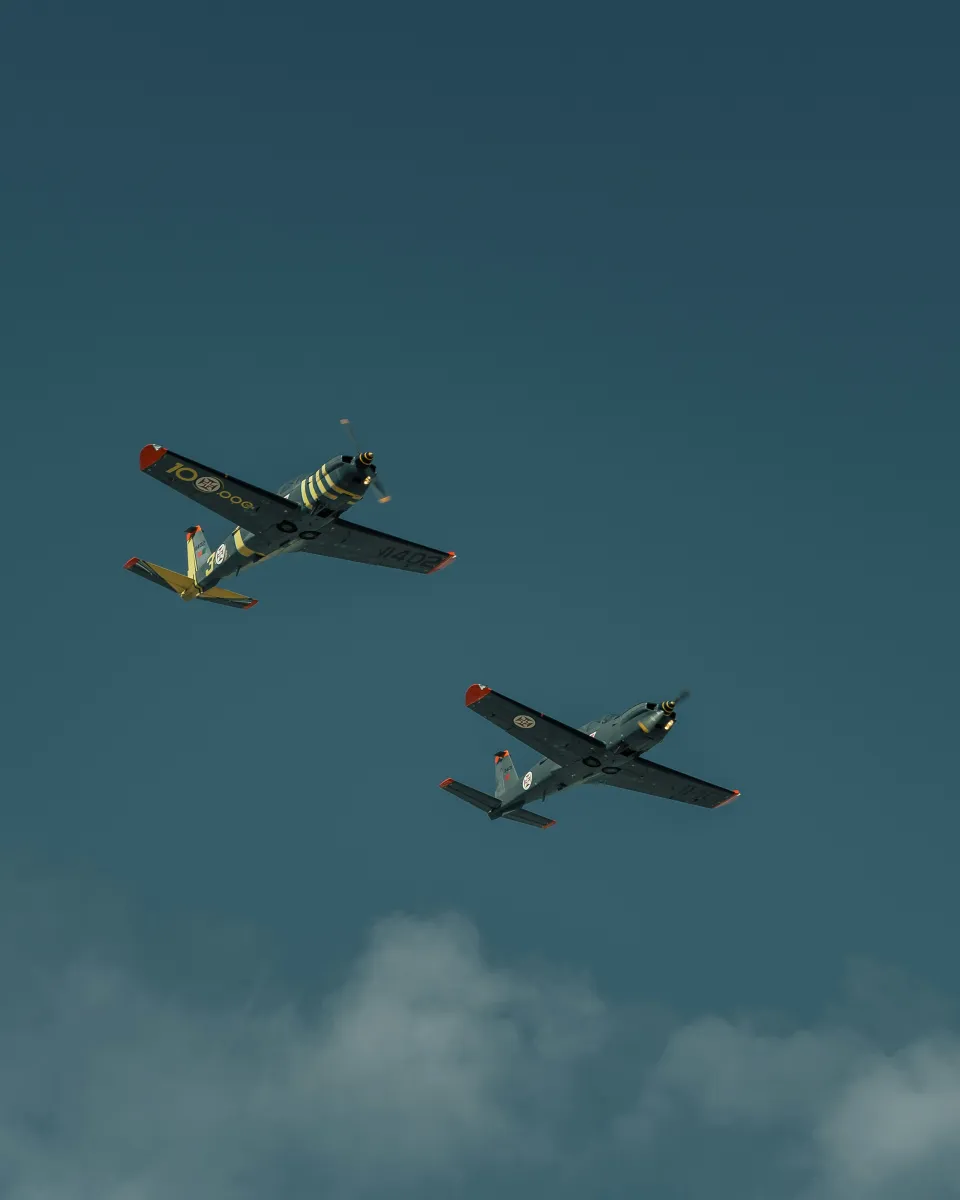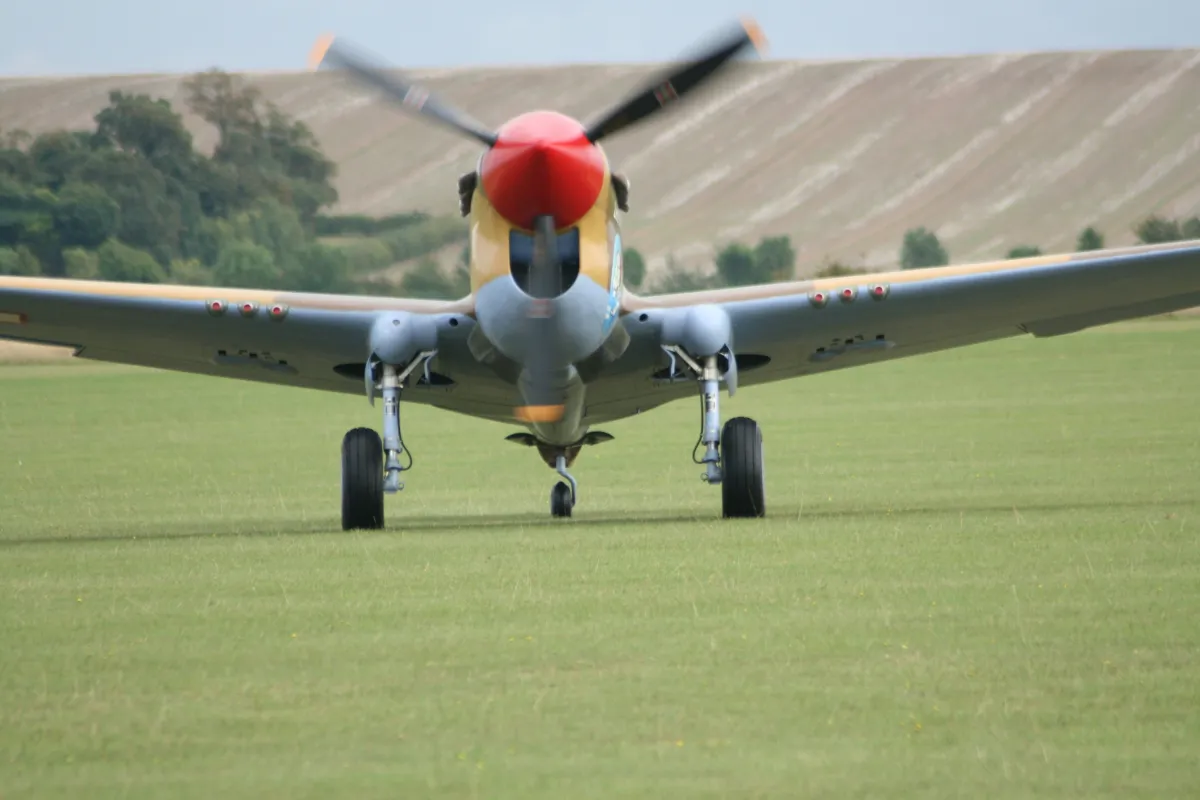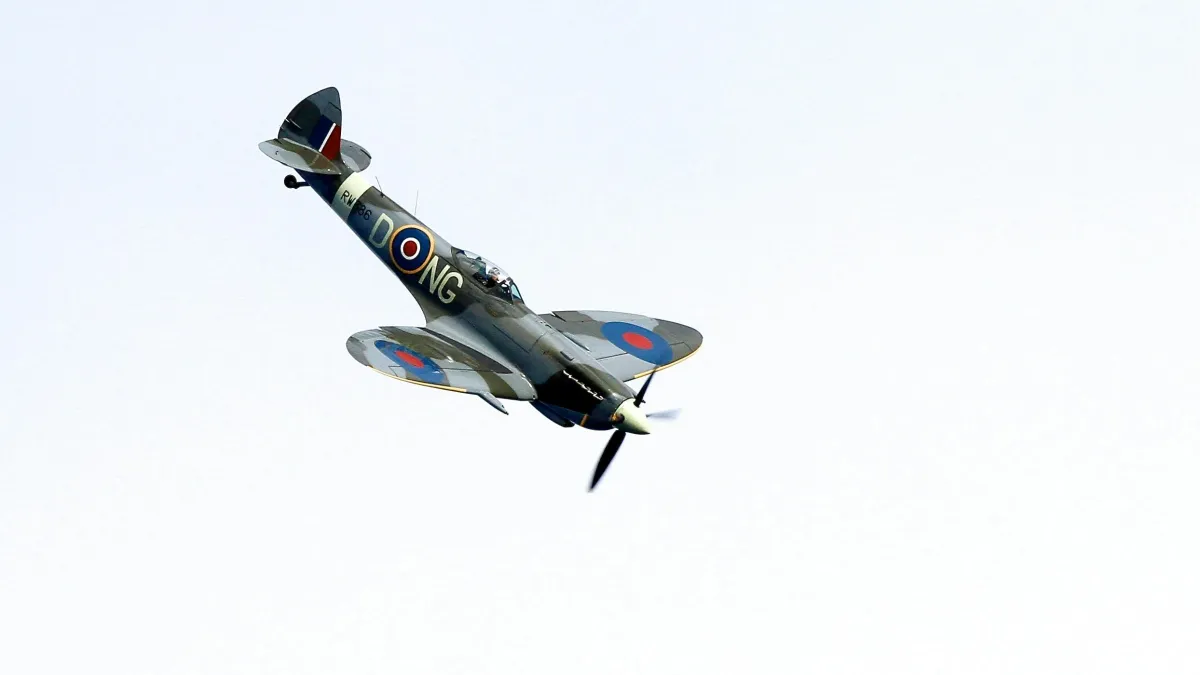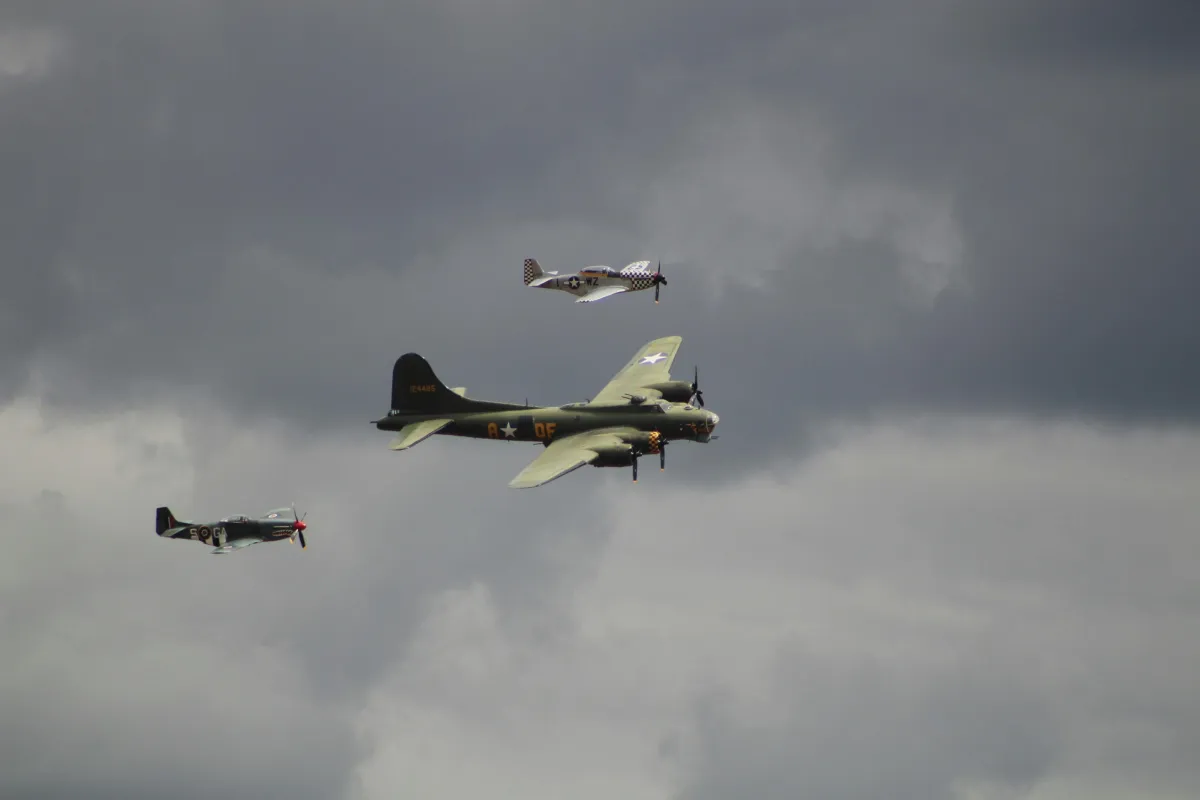19 °c Wind speed: 39 km/h Precipitation: 6 % Cloudiness: 50 % Humidity: 76 mm Pressure: 6 mb
Spitfires.com "The Spitfire Academy"
East Row
Chichester
PO19 1PR
United Kingdom
Description
Spitfires.com's "The Spitfire Academy" is not a theme park exhibit — it's a living, breathing history of one of the most exquisite warbirds ever to be built. Situated in the rolling Sussex countryside at Goodwood Aerodrome, the interactive exhibition brings together aircraft buffs, history buffs and adrenalin junkies to transport themselves back in time and get up close and personal with the iconic Supermarine Spitfire. From make-believe classes in familiarization and handling to the real thing adrenaline-pumping taxi flights, The Academy brings back the real thing experience which brings back in technicolor the piston-flight good old days again.
What Is The Spitfire Academy
In practice, The Spitfire Academy is a commercial flying experience centre dedicated to preserving and protecting the history of the Supermarine Spitfire. Unlike static museums where you just stand and watch things under glass, the Academy puts you in charge. Based in purpose-built hangars above one of Britain's leading airfields, it provides hands-on teaching, heritage interpretation and awe-inspiring flight demonstrations.
Interactive Ground School
The instant you step off the coach, you're in a setting of world-class classrooms — complete with centuries-old maps, simulator controls and a stash of dummy panels. There, battle-won retired-RAF trainers hammer into you every technical aspect of the Spitfire, from aerodynamics to World War II combat strategy. You are taught to read Rolls-Royce Merlin engine instrument settings, a side-shouldering avoid turn and fuel mixture control — an introduction to the art and skill of 1940s air-pugilotage.
Cockpit Familiarisation
Apart from theory, the most passion the Academy has apart from theory is in its duplicated Spitfire cockpit modules. Brand-new refurbished modules involve original or duplicated gauges, control columns and canopy frames. You develop pre-flight checklist, throttle control and stick-and-rudder co-ordination skills through directed guidance — even the heaviness of the wooden control yoke.
Simulator Flights
Even before you reach the point of getting your hands dirty flying a real live airplane, you get your fundamentals in training using impossibly realistic simulators. Far better than utilitarian PC-based training facilities, motion-platform simulators mimic engine shake, torque feedback and even ambient air sounds heard through the canopy. They enable you to practice formation flying, dive-and-recovery flying and low-altitude route following, great preparation for the actual flight.
Hangar Tours and Maintenance Insights
The Academy hangers contain a collection of airworthy Spitfires — all serviced with care by a team of skilled engineers. You inspect under cowls, peer through the inner shape of the elliptical wing and see the Merlin engine hand-tuned. Party members are stunned to find there are less than a dozen flightworthy Spitfires in the entire world and so each servicing session is a mini-miracle of aeroplane preservation.
Cockpit Walk-Around and Taxi Thrills
During your last practice flight, you are in era-flight dress and shot-gun a lead pilot departure. Warbird taxiing itself is an adrenaline rush like no other: Merlin burble, tail-wheel wag and that wonderful prop wash leave you with a gut-level amazement at raw power most modern fighter jets can but only dream of.
A Brief History of The Spitfire Academy
While the Supermarine Spitfire itself is history in the making by the late 1930s, this concept of an individualized "Spitfire Academy" is fresh — a mix of heritage flight and experience tourism. And that is where it all began:
The Spitfire's Golden Age (1936–1945)
The Spitfire was designed by R.J. Mitchell, which made its maiden flight in 1936. Its elliptical wing and Merlin engine gave it the power to make the Spitfire a nuisance to fight during World War II and the Battle of Britain. Climb, speed, and agility were what pilots loved and what made the Spitfire gain air supremacy for Europe.
Post-War Preservation (Late 1940s–1970s)
With the Allied triumph in World War II in 1945, the majority of wartime Spitfires were retired or broken up. A few were adapted for naval training or civilian use, but economic recession relegated many survivors to the backburner. Enthusiast clubs started stripping parts out and, by the 1960s, a grass-roots restoration process was underway, being undertaken by volunteers and private collectors mainly.
Heritage Flight Companies Emerge (1980s–2000s)
As live history gained momentum, warbird restorations became airborne and were flying professionally. They traded in show flying for sponsorship to provide for high maintenance costs. Here is where pricier, more colorful options, beyond flightseeing flights, started.
Spitfires.com beginnings (Mid-2000s)
Observing a gap in the market for heritage-dipping experience, a flying enthusiast and business community established Spitfires.com. Duxford-based at first and subsequently Goodfire Aerodrome, they offered flight experiences, ground days and filming services to assist documentaries and films.
Origins of The Spitfire Academy (2015)
Five years of heritage flying and pilot seminar training later, Spitfires.com opened The Spitfire Academy in 2015. The objective: to blend serious training with the romance of the 1940s fighter-pilot way of life. Specialist training rooms, hangar facilities and simulators were established, and Battle of Britain and ex-RAF veterans were hired as instructors and ambassadors.
It is a decade that has witnessed old simulators being replaced with new ones, its instructor cadre replaced with better personnel, and hi-tech modules added, including g-force acclimatisation and air formation photography. Corporate and VIP clients have private excursion facilities. The Academy is today a first-rate warbird training academy in the world, where history, education, and raw adrenaline are blended.
Interesting Facts You May Not Know
Even avion-dino enthusiasts like old-timers will be amazed at The Spitfire Academy. Below are some of the treasures that unveil the fact that this center is something beyond the ordinary:
Elliptical Wing Origins
Its traditional, seagull-winged profile was borrowed from avian aerodynamics. Avian aerodynamics was borrowed by Mitchell's designers as a fix to try and cut down on drag and add lift. That swoopy look is just as much a function as it is gorgeous.
Merlin Engine Heritage
Rolls-Royce Merlin engine to power most early Spitfires on was originally designed to power deep penetration bombers but by redesign was employed to power fighters. It takes more than £500,000 to re-build one engine while others require running-over daily when at war.
Hands-On Riveting
At one location, the visitors can see an interesting single panel on a wing being repaired. Learning the proper riveting technique, punching down over curved collar on top of the pin, is real craftsmanship and worthy of even more admiration for the same.
There is Only One Flightworthy Original Prototype Left
Of over 20,000 Spitfires that were made, just one original early pre-production Type 300 prototype survives and flies to this day. It gets the occasional flight out to an airshow from time to time for a few flights, but replica by The Spitfire Academy means it can now be flown more frequently without the risk of losing a priceless original.
Simulated Combat Missions
In advanced simulator modules, participants can fly dogfights against AI-controlled Messerschmitt Bf 109s. The Academy’s software models actual World War II tactics, so you’ll learn about “boom-and-zoom” and “inverted diving” just like a real RAF pilot.
Veteran Instructors
Among the senior tutors at The Spitfire Academy are the children of World War II pilots and reenactment club members of RAF Battle of Britain. Their first-hand experience, like hunting Luftwaffe across the Channel, provides the realism you will not get from reading a book.
Charitable Wings
A portion of profit realized through The Spitfire Academy is donated to the RAF Benevolent Fund and Aircraft Restoration Company to support pilot welfare and heritage for future generations to preserve.
Why People Go to The Spitfire Academy
Bucket-List Adventure
Few life experiences rival the roar of a Spitfire engine beneath you. Whether you’re celebrating a milestone birthday or just seeking an epic adrenaline hit, the Academy delivers a story you’ll be telling for decades.
Historical Connection
For pilots, nothing replaces flying the same runways pilots desperately defended Britain. There's a history behind every instrument, every rivet — so the experience is a living museum, not a static one.
Professional Pilot Training
Student pilots have in-seat training in a high-performance tail-dragger aircraft. As no replacement for traditional flight instruction, the Academy modules supplement stick-and-rudder proficiency trainers cannot deliver today.
Conclusion
The Spitfire Academy offers something tactile, something warm: the Merlin snarl of engine, a toss of a switch between faces in the cockpit, screams of air through an open cockpit. It offers sturdy teaching combined with zealot passion, preserving the mythos of Supermarine Spitfires not only at the museums but on the palms and souls of the brave enough to hold onto the controls.




Comments